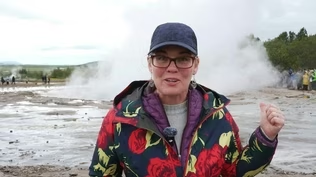But Why – A show for curious kids
How do seeds grow into trees?
2/14/2025 | 2m 13sVideo has Closed Captions
How do seeds grow into trees? Asks Job from Conecticut
Trees take top billing for the tallest plants on Earth, but their unassuming start as a little seed leaves a lot of questions! Let's take a look at what gets you from that seed to a full-grown tree in this But Why Bite.
Problems playing video? | Closed Captioning Feedback
Problems playing video? | Closed Captioning Feedback
But Why – A show for curious kids is a local public television program presented by Vermont Public
But Why – A show for curious kids
How do seeds grow into trees?
2/14/2025 | 2m 13sVideo has Closed Captions
Trees take top billing for the tallest plants on Earth, but their unassuming start as a little seed leaves a lot of questions! Let's take a look at what gets you from that seed to a full-grown tree in this But Why Bite.
Problems playing video? | Closed Captioning Feedback
How to Watch But Why – A show for curious kids
But Why – A show for curious kids is available to stream on pbs.org and the free PBS App, available on iPhone, Apple TV, Android TV, Android smartphones, Amazon Fire TV, Amazon Fire Tablet, Roku, Samsung Smart TV, and Vizio.
Providing Support for PBS.org
Learn Moreabout PBS online sponsorshipPart of These Collections
Providing Support for PBS.org
Learn Moreabout PBS online sponsorshipHow do seeds grow into trees?
Trees are one of the primary sources of oxygen on the planet, and they range in size from teeny tiny to absolutely gigantic.
But each of these massive plants all have one thing in common.
They started small.
Trees spread and grow by dropping seeds or nuts that are spread in many different ways, like by the wind, by water, or by animals carrying them.
From there, seeds just need a little time and the right conditions to start growing.
Let's take an acorn, the seed of an oak tree, as an example.
Oak trees take part in a process called seed masting, dropping most of their acorns at once and then taking a long break.
A lot of these seeds don't make it to maturity for a number of reasons, like squirrels collecting them for food.
In a forest it can also be difficult for new trees to grow until an older one dies, making space for those new trees to get the light and nutrients they need.
Once an acorn germinates, the seed will burst from the shell and take root in the ground, grabbing nutrients from the soil to establish the next phase.
Pushing back up out of the ground so it can photosynthesize.
As the plant grows upwards, the roots will begin to grow sideways, establishing a stronger grasp on the soil so the plant can grow taller without falling down.
Saplings are the most important phase for the longevity of a tree.
Before the trunk hardens, a sapling will take up shape and grow to take in the most light.
This is where the tree grows the fastest.
Did you know that there's a theory that some trees work together?
Their roots can be connected by a fungal network, exchanging sugars and nutrients from one tree to another.
It just goes to show you that in order to grow strong and tall, even trees need to work together.
To find out more about But Why and listen to our full episodes go to butwhykids.org

- Science and Nature

Explore scientific discoveries on television's most acclaimed science documentary series.

- Science and Nature

Capturing the splendor of the natural world, from the African plains to the Antarctic ice.












Support for PBS provided by:
But Why – A show for curious kids is a local public television program presented by Vermont Public

